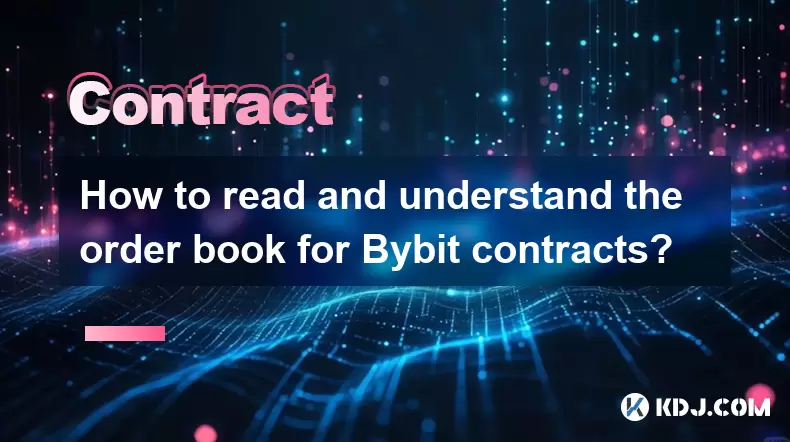-
 Bitcoin
Bitcoin $118400
1.64% -
 Ethereum
Ethereum $4210
-1.74% -
 XRP
XRP $3.175
-2.25% -
 Tether USDt
Tether USDt $1.000
0.00% -
 BNB
BNB $800.7
-0.18% -
 Solana
Solana $183.2
1.19% -
 USDC
USDC $0.9998
0.00% -
 Dogecoin
Dogecoin $0.2319
-4.30% -
 TRON
TRON $0.3388
1.11% -
 Cardano
Cardano $0.7951
-1.77% -
 Hyperliquid
Hyperliquid $44.76
1.61% -
 Chainlink
Chainlink $21.93
2.82% -
 Stellar
Stellar $0.4409
-1.92% -
 Sui
Sui $3.828
-2.37% -
 Bitcoin Cash
Bitcoin Cash $568.3
-0.57% -
 Hedera
Hedera $0.2561
-2.80% -
 Ethena USDe
Ethena USDe $1.001
-0.02% -
 Avalanche
Avalanche $23.63
-3.68% -
 Litecoin
Litecoin $124.0
1.80% -
 Toncoin
Toncoin $3.317
-2.74% -
 UNUS SED LEO
UNUS SED LEO $9.029
0.34% -
 Shiba Inu
Shiba Inu $0.00001349
-2.54% -
 Uniswap
Uniswap $10.85
-1.44% -
 Polkadot
Polkadot $4.025
-2.41% -
 Dai
Dai $1.000
0.01% -
 Cronos
Cronos $0.1619
2.41% -
 Ethena
Ethena $0.7756
4.12% -
 Bitget Token
Bitget Token $4.437
-1.70% -
 Pepe
Pepe $0.00001194
-3.82% -
 Monero
Monero $267.3
-2.17%
How to read and understand the order book for Bybit contracts?
The Bybit order book displays real-time buy and sell orders, helping traders analyze market depth, spot support/resistance, and anticipate price moves based on bid-ask imbalances.
Aug 09, 2025 at 11:01 pm

Understanding the Order Book Interface on Bybit
When navigating the Bybit contracts trading interface, the order book is a critical component for analyzing market depth and sentiment. Located on the right side of the trading screen, the order book displays real-time buy (bids) and sell (asks) orders for a specific contract. The left column shows bid prices—the highest prices buyers are willing to pay—while the right column lists ask prices—the lowest prices sellers are willing to accept. Each price level includes the corresponding quantity of contracts available at that price.
The order book updates dynamically as new orders are placed, modified, or filled. Price levels are arranged in descending order for bids and ascending order for asks. The narrowest gap between the highest bid and the lowest ask is known as the spread, and a tighter spread typically indicates higher liquidity. Traders should pay attention to the depth of the order book, which reflects the cumulative volume available at various price levels. A deep order book with large volumes near the current market price suggests strong support and resistance zones.
Interpreting Bid and Ask Sides of the Order Book
The bid side represents demand in the market. Larger quantities at higher bid prices indicate strong buying interest. For example, if there is a cluster of 0.5 BTC orders at $60,000, this level may act as a temporary support. Conversely, the ask side reflects supply. A significant volume of contracts listed at a certain ask price, such as 0.8 BTC at $60,500, suggests potential resistance.
Traders use this information to anticipate price movements. A sudden surge in bid volume may signal accumulation, while a growing ask wall could indicate distribution. Order book imbalance—when one side has significantly more volume—can foreshadow price direction. For instance, if the total bid volume is 3 times larger than the ask volume, upward pressure may build. However, large resting orders can also be spoofing—intentionally placed to manipulate perception—so traders must remain cautious.
Using Market Depth and Price Levels for Decision-Making
The market depth chart, often displayed alongside the order book, visualizes cumulative buy and sell volume across price levels. This chart helps traders identify key support and resistance zones. A steep incline in the depth chart on the bid side indicates strong buying interest at lower prices, potentially forming a support floor.
To assess market strength, traders analyze how price reacts near large order walls. Suppose the order book shows a 2 BTC sell wall at $61,000. If price approaches this level and stalls or reverses, it confirms resistance. Conversely, if the wall is quickly absorbed, it may signal strong bullish momentum. Traders can use limit orders to place trades just behind large walls, anticipating breakout or reversal scenarios.
For precision, traders should monitor changes in order book dynamics. A sudden removal of a large bid or ask order can trigger rapid price movement. Real-time monitoring tools on Bybit allow users to set alerts for volume changes at specific price levels.
Placing Orders Based on Order Book Analysis
To act on order book insights, traders must understand how to place different order types effectively. Here is how to execute trades based on observed market depth:
- Navigate to the contract trading interface on Bybit and select the desired contract, such as BTCUSD.
- Observe the current best bid and ask prices in the order book.
- If you anticipate a breakout above a large ask wall, place a limit buy order slightly above the resistance level to avoid slippage.
- To sell into strength near a dense bid cluster, set a limit sell order at or near the top of the bid stack.
- Use post-only settings to ensure your limit order doesn’t execute immediately as a taker, helping you earn maker rebates.
- For aggressive entries, use market orders, but be cautious of slippage in low-liquidity conditions.
Always confirm the order size and leverage settings before submission. Bybit displays the estimated liquidation price and margin requirements, which should align with your risk parameters.
Monitoring Real-Time Order Book Changes
The order book is not static. To stay ahead, traders must monitor real-time updates. On Bybit, the order book refreshes every few milliseconds, showing new orders, cancellations, and fills. Key indicators to watch include:
- Sudden appearance of large orders (whales entering the market).
- Rapid cancellation of deep liquidity, which may precede a price spike.
- Order book compression, where bid and ask prices converge, often before volatility.
- Imbalance shifts, such as a dominant bid side flipping to ask dominance.
Bybit’s websocket API allows advanced users to stream order book data programmatically. This enables algorithmic strategies based on order flow. For manual traders, enabling price and volume alerts in the app helps track critical levels without constant screen monitoring.
Common Pitfalls and How to Avoid Them
Misinterpreting the order book can lead to poor decisions. One common mistake is assuming large orders are genuine. Spoofing involves placing large orders to create false demand or supply, then canceling them before execution. To reduce risk:
- Avoid chasing price into large order walls without confirmation.
- Cross-check order book data with recent trade volume and funding rates.
- Use time and sales data to verify if large orders are being filled or just displayed.
- Combine order book analysis with candlestick patterns and technical indicators.
Another pitfall is over-reliance on the order book in low-liquidity markets. Thin order books can result in significant slippage and unpredictable price swings. Always check the 24-hour trading volume and open interest to gauge market health.
Frequently Asked Questions
What does a green number mean in the Bybit order book?
The green numbers in the order book represent bid prices—the prices at which traders are willing to buy the contract. These are displayed on the left side and indicate demand levels.
How can I see the total volume at a specific price level?
Hover your cursor over a price row in the order book. Bybit displays a tooltip showing the exact quantity of contracts available at that level. The market depth chart also visualizes cumulative volume.
Can I hide the order book on Bybit?
Yes. Click the gear icon in the trading interface and disable the order book display. However, this is not recommended for active traders who rely on market depth.
Does the order book show hidden orders?
No. The order book only displays visible orders. Hidden or iceberg orders are not shown, though their partial fills may appear in the trade history.
Disclaimer:info@kdj.com
The information provided is not trading advice. kdj.com does not assume any responsibility for any investments made based on the information provided in this article. Cryptocurrencies are highly volatile and it is highly recommended that you invest with caution after thorough research!
If you believe that the content used on this website infringes your copyright, please contact us immediately (info@kdj.com) and we will delete it promptly.
- LYNO AI & XRP: Decoding the ROI Potential in a Shifting Crypto Landscape
- 2025-08-11 04:30:11
- Cryptos on the Cusp: Cold Wallet, Price Breakouts, and What's Hot Now
- 2025-08-11 04:50:11
- Dogecoin, Meme Coins, and Remittix Utility: What's the Hype?
- 2025-08-11 04:50:11
- Sky Bet, ESPN, and the Spartans Bonus: A Betting Landscape Overview
- 2025-08-11 05:11:16
- Altcoin Buyouts & Market Removals: Crypto Development's Wild Ride
- 2025-08-11 04:30:11
- Bitcoin Banks Arrive: El Salvador's Bold Play with Investment Banks and Crypto
- 2025-08-11 04:55:12
Related knowledge

Is it possible to adjust the leverage on an open position on KuCoin?
Aug 09,2025 at 08:21pm
Understanding Leverage in KuCoin Futures TradingLeverage in KuCoin Futures allows traders to amplify their exposure to price movements by borrowing fu...

What cryptocurrencies are supported as collateral on KuCoin Futures?
Aug 11,2025 at 04:21am
Overview of KuCoin Futures and Collateral MechanismKuCoin Futures is a derivatives trading platform that allows users to trade perpetual and delivery ...

What is the difference between realized and unrealized PNL on KuCoin?
Aug 09,2025 at 01:49am
Understanding Realized and Unrealized PNL on KuCoinWhen trading on KuCoin, especially in futures and perpetual contracts, understanding the distinctio...

How does KuCoin Futures compare against Binance Futures in terms of features?
Aug 09,2025 at 03:22am
Trading Interface and User ExperienceThe trading interface is a critical component when comparing KuCoin Futures and Binance Futures, as it directly i...

How do funding fees on KuCoin Futures affect my overall profit?
Aug 09,2025 at 08:22am
Understanding Funding Fees on KuCoin FuturesFunding fees on KuCoin Futures are periodic payments exchanged between long and short position holders to ...

What is the distinction between mark price and last price on KuCoin?
Aug 08,2025 at 01:58pm
Understanding the Basics of Price in Cryptocurrency TradingIn cryptocurrency exchanges like KuCoin, two key price indicators frequently appear on trad...

Is it possible to adjust the leverage on an open position on KuCoin?
Aug 09,2025 at 08:21pm
Understanding Leverage in KuCoin Futures TradingLeverage in KuCoin Futures allows traders to amplify their exposure to price movements by borrowing fu...

What cryptocurrencies are supported as collateral on KuCoin Futures?
Aug 11,2025 at 04:21am
Overview of KuCoin Futures and Collateral MechanismKuCoin Futures is a derivatives trading platform that allows users to trade perpetual and delivery ...

What is the difference between realized and unrealized PNL on KuCoin?
Aug 09,2025 at 01:49am
Understanding Realized and Unrealized PNL on KuCoinWhen trading on KuCoin, especially in futures and perpetual contracts, understanding the distinctio...

How does KuCoin Futures compare against Binance Futures in terms of features?
Aug 09,2025 at 03:22am
Trading Interface and User ExperienceThe trading interface is a critical component when comparing KuCoin Futures and Binance Futures, as it directly i...

How do funding fees on KuCoin Futures affect my overall profit?
Aug 09,2025 at 08:22am
Understanding Funding Fees on KuCoin FuturesFunding fees on KuCoin Futures are periodic payments exchanged between long and short position holders to ...

What is the distinction between mark price and last price on KuCoin?
Aug 08,2025 at 01:58pm
Understanding the Basics of Price in Cryptocurrency TradingIn cryptocurrency exchanges like KuCoin, two key price indicators frequently appear on trad...
See all articles

























































































